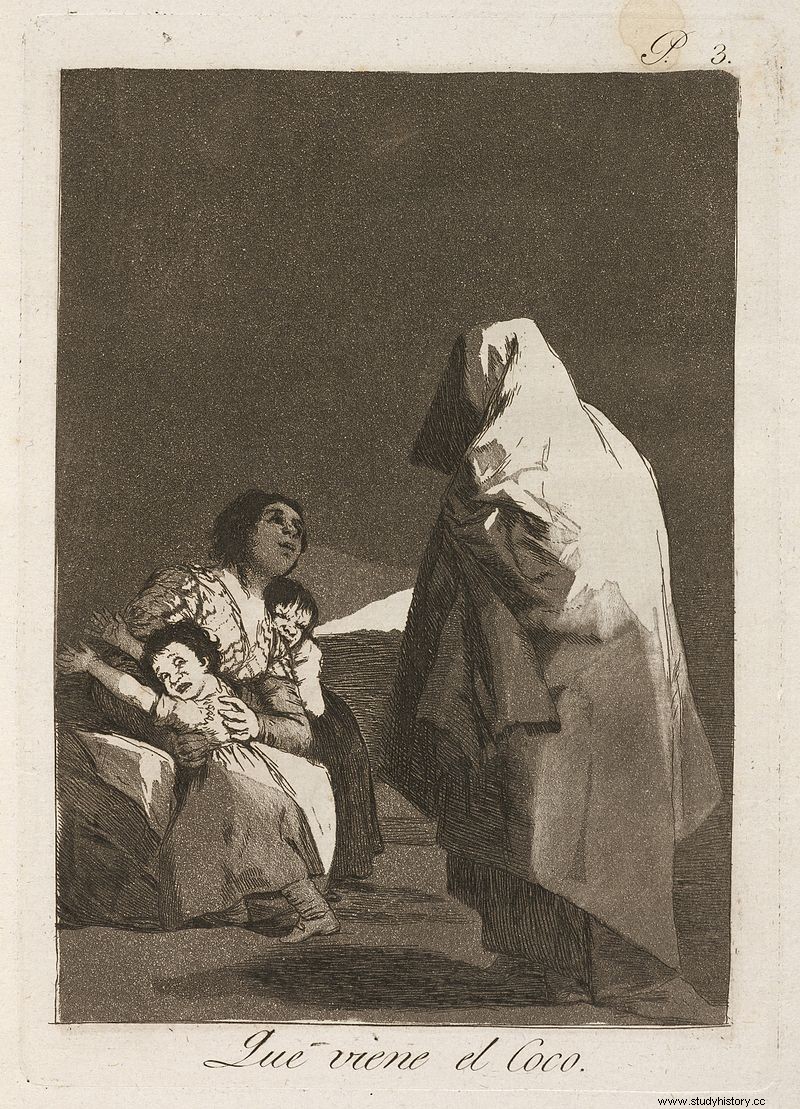Whether it was the Telerín Family , Topo Gigio or Casimiro , as children we have always had a reference that the older ones used to send us to bed. The appearance on television of one of these characters, depending on the decade, marked bedtime. Sometimes, that moment had to be accompanied by the reading of a story or, for the little ones, with a lullaby that, in theory, should reassure and relax the child. And I say in theory, because how do you relax a child with this lullaby... If the child falls asleep it is because of sheer terror of the coconut
Go to sleep child,
go to sleep now,
the coconut is coming
and it will eat you.
In fact, The coconut is coming (1799) is an engraving by the painter Francisco de Goya in which he criticized that parents frighten children with ghosts and beings that did not exist. According to a manuscript from the National Library in which this engraving is explained, «Silly mothers make children fearful by frightening them with the Coco; and other worse ones use this artifice to be alone with their lovers when they cannot get their children away from them » (the woman's face doesn't show much fear…)

And what was the bogeyman in ancient Rome? Well, the Lemurs . The lullaby could have been something like this...
Go to sleep child,
go to sleep now,
the lemur is coming
and will eat you
In ancient Rome, the Lemures they were the specters, the ghosts or spirits of death that roamed the night scaring and tormenting the living. On the 9th, 11th and 13th of Maivs (May) the Lemuria took place , intended to placate the Lemures . The Pater Familias He had to get up before dawn and perform a series of rituals (throwing a handful of black beans down his back, hitting a bronze object, etc.) to expel evil spirits. It would be the Swedish naturalist and botanist Linnaeus who would give the name of lemurs to these primates of the island of Madagascar for their nocturnal habits, their ghostly reflective eyes and their screams.
